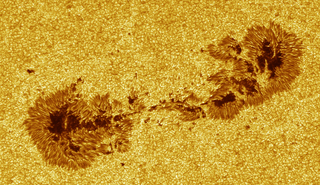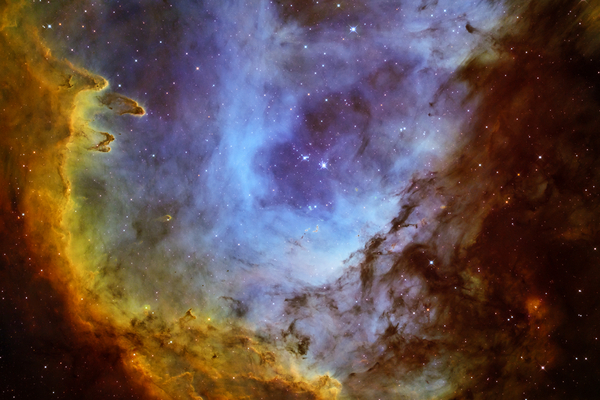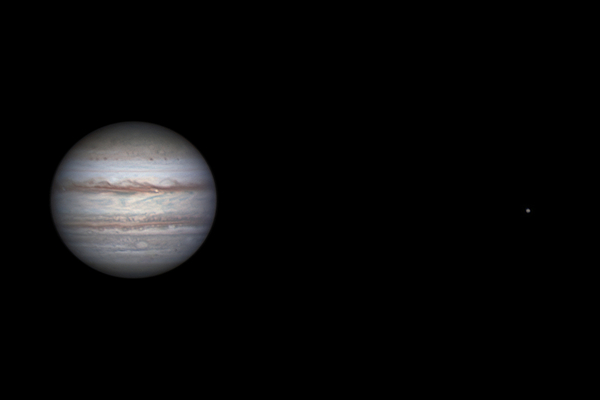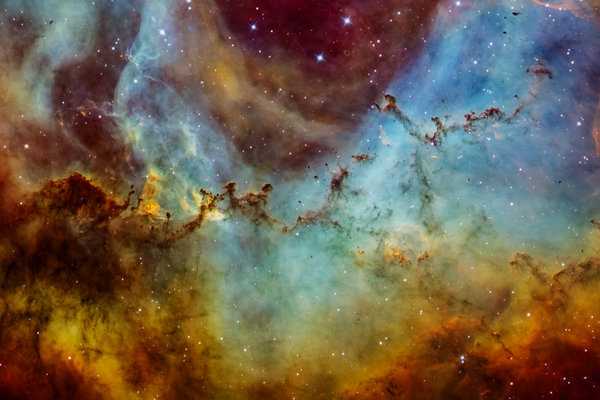Astrophoto of the month - July 2022 - Fireflowers
AR13055 bipolar sunspot group captured by László Francsics
A wonderful and special astrophotography image each month by Hungarian astrophotographers.
Sunspots on the sun
With the progress of the current 25th solar cycle, more and more complex sunspots appear on the photosphere, the visible surface of our central star, the Sun. The appearance of these sunspots is completely normal, it is in accordance with the solar activity. The Italian astronomer Galileo Galilei noticed spots on the Sun as early as in 1610 during his first telescope observations. It was later discovered that these spots change, appear and disappear, linked to the 11-year cycle of the Sun.
The Sun as a magnet
These darker shapes can be observed (with the help of proper solar filters), because they are 2,000 degrees cooler and therefore emit less light than the normal 5,778-degree Kelvin photosphere. The spots are created by an extremely strong magnetic field emerging from the depths of the Sun. The beam of magnetic field lines reduces the pressure of the plasma on the surface, and thus the temperature, so a cool spot is formed exactly where the beam breaks through the surface. As the magnet has two poles, the magnetic field lines return under the surface of the Sun in a different location. In this case a pair of spots may also form, and together they form a so-called bipolar sunspot.
The sunspot AR13055
One of the largest sunspots of the current cycle was numbered AR13055, which was also the most regular bipolar sunspot in this cycle until now. Its symmetry is also real, as the polarities of the opposite sides of the sunspot group are also opposite. This phenomenon can also be clearly seen in the recording of the magnetometer of the Solar Dynamics Observatory orbiting in space. Blue represents the one, red the other magnetic pole.

How was it made?
Taking such a photo is a challenge even for solar observatories, not to mention amateur astrophotographers, that’s why it is worth reading the short description of the author, László Francsics:
This is the first time in the current solar cycle that a bipolar sunspot group of such size and clear structure as the AR13055, has appeared. The interesting thing about AR13055 is that it formed in front of our eyes. I put aside my Solar Continuum filter (540 nm) and started experimenting with an Edmund Optics 394 nm (fwhm: 10nm) filter instead, and despite bad seeing I achieved unprecedented resolution and contrast with my 30 cm Newtonian telescope, optimized for photographing the Sun's surface. Another big plan has been realized again, as in addition to the fine structure of the granulation I could also capture the so-called intergranular phenomena, also known as filigrees, which are formed in the "valleys" as a result of the magnetic field emerging to the surface between the granulation cells. These structures usually take on elongated shapes like chains - sometimes straight, sometimes curved or zigzag.
Never photograph or look into the Sun without proper solar filters or else serious injury or damage to equipment may occur!
Dr. László Francsics





